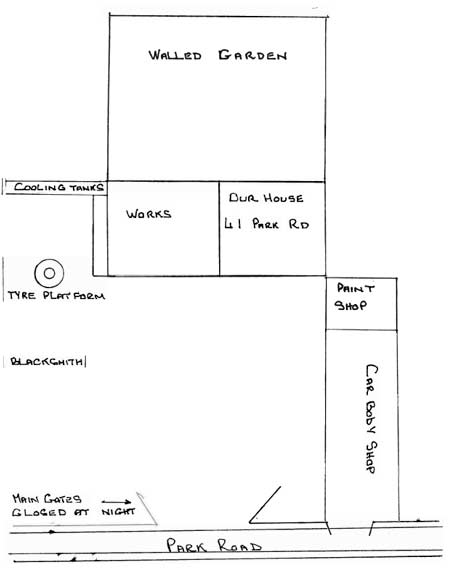|
This memory was published in the West Sussex Gazette on 2nd August 2001
'I still marvel at the skills of wheelwrights,' wrote Tony Hammond, who was raised in Worthing before the war.
'I was born on the 14th April 1930 at my aunt's house 57 Lyndhurst Worthing. She was a professional dressmaker, and during the day the dining room was turned into her workshop. I spent many happy hours playing with my cousins amongst a vast array of cottons, buttons and remnants of material, and even before I went to school, crepe de Chine, organza, voile, were all names I knew well.
My uncle was a chauffeur for Wades garage and he would occasionally take us for rides in some very exotic motor cars.
My real home was 41 Park Road, now Arnold's Body Centre, and in the 1930s our home was an integral part of J S Arnolds works. I can only surmise that our house was once part of a much larger one, I say this because the very large kitchen was out of proportion to the rest of our accommodation. The house was also set well back from the road with a large back garden surrounded by a huge flint wall.
The attached sketch will I hope give you an idea of the set up. The ground floor of the works to the left of the house was the main carriage workshop, the first floor held the electric saws, and when the circular saw was at full chat we could hardly hear ourselves speak in the house.
At that time they repaired horse drawn wagons and carts and I loved playing in the ones used by the bakers because they smelt absolutely lovely.
Even today I still marvel at the skills of the wheelwrights and my favourite pastime was watching the blacksmith making the metal tyre and the final fitting of it to the wooden wheel. This last procedure is best described as controlled chaos. The wheel was clamped on to a stand called a tyre platform, a flat slab of concrete with a hole in the middle. The red hot metal tyre was then placed over the outside of the rim of the wheel and hammered down, lots of steam, hissing and even flames coming from the scorching timber. As soon as the tyre was in position it was drenched with cold water, preventing damage to the wheel and speeding up the contraction of the tyre. For quite some time afterwards the wheel would creak and groan as the contracting tyre tightened up all the joints in a vice like grip.
I visited Arnolds Body Centre some years ago and I was delighted to see that the tyre platform was still in situ.
Before going back into service some of the carts received the attention of a sign writer, and if I was lucky I would find the odd piece of paper with some gold leaf still on it.
It was not only horse drawn vehicles that Arnolds repaired, part of the yard was for repairing car bodies which were painted with cellulose and polished until the paint looked as though you could fall into it.'

Sketch showing position of the house in Arnold's yard where a young Tony Hammond lived before the war.
|
This memory was published in the West Sussex Gazette on 2nd August 2001
| |


